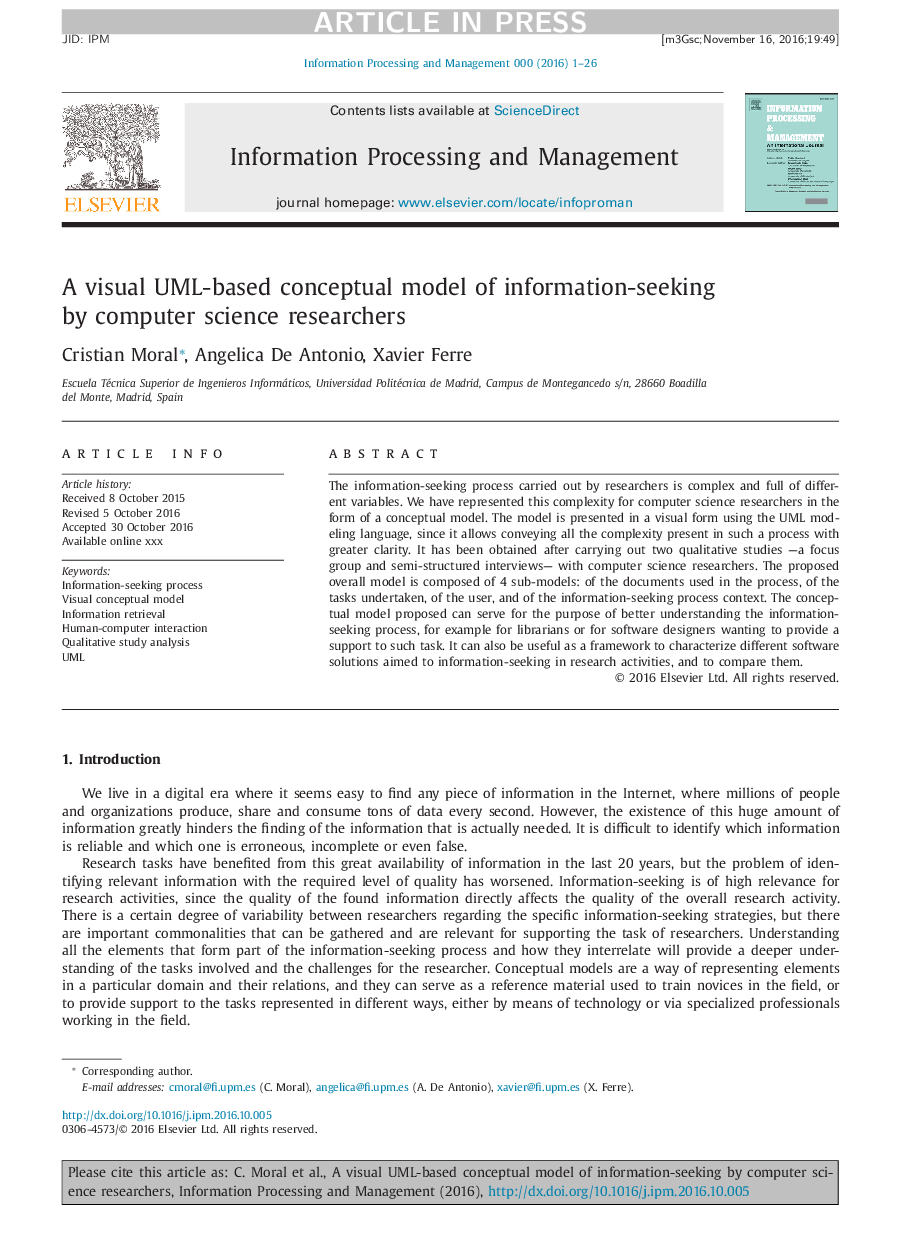| Article ID | Journal | Published Year | Pages | File Type |
|---|---|---|---|---|
| 4966475 | Information Processing & Management | 2017 | 26 Pages |
Abstract
The information-seeking process carried out by researchers is complex and full of different variables. We have represented this complexity for computer science researchers in the form of a conceptual model. The model is presented in a visual form using the UML modeling language, since it allows conveying all the complexity present in such a process with greater clarity. It has been obtained after carrying out two qualitative studies -a focus group and semi-structured interviews- with computer science researchers. The proposed overall model is composed of 4 sub-models: of the documents used in the process, of the tasks undertaken, of the user, and of the information-seeking process context. The conceptual model proposed can serve for the purpose of better understanding the information-seeking process, for example for librarians or for software designers wanting to provide a support to such task. It can also be useful as a framework to characterize different software solutions aimed to information-seeking in research activities, and to compare them.
Related Topics
Physical Sciences and Engineering
Computer Science
Computer Science Applications
Authors
Cristian Moral, Angelica De Antonio, Xavier Ferre,
